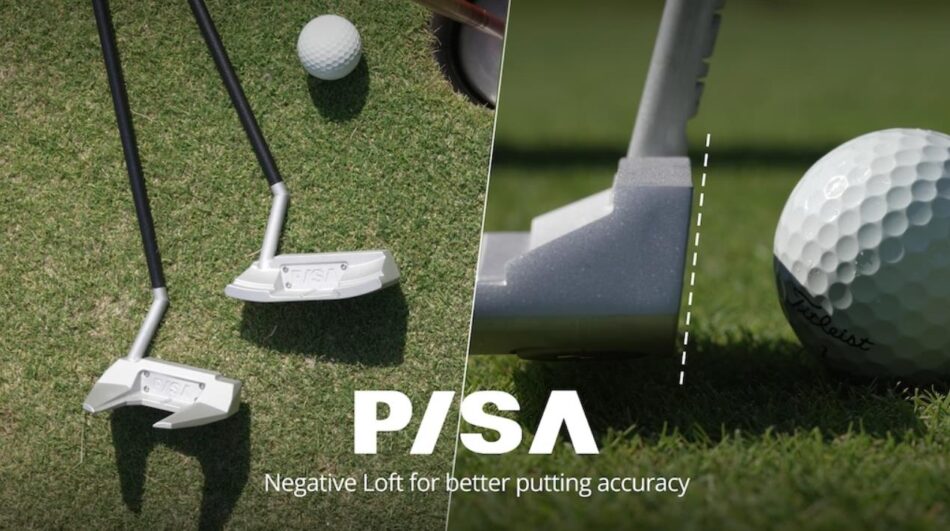PISA’s low-friction materials optimized for negative loft dramatically reduces the skid distance and enables accurate putting.
Check on Kickstarter



















When striking a ball with a conventional putter, it bounces or skids along the ground for first several inches instead of rolling immediately, which is called a “skid zone”. Skid zone covers the initial 15 to 18% of the total traveling distance and causes a distortion in the direction of the ball, reducing the distance as a result.

The ball enters the skid zone because the stroke creates a friction between the ground and the striking surface in contact with the ball. While the ground friction helps to create a pure roll, the friction from the putter’s striking surface interrupts the rotation of the ball. Due to two contrary frictions occurring simultaneously on a single strike, the ball in the skid zone cannot rotate immediately and often bounces to the wrong direction.

The conventional putters are equipped with a positive loft angle of around 3 to 5 degrees to solve this issue. This will neutralize and avoid both frictions mentioned but makes it difficult to create a pure roll in the initial stage of a stroke.



USGA uses the stimpmeter as the standard units of measurement for green speed. Because stimpmeter measures by rolling rather than hitting, standard value of green speed can be consistently obtained as there is no skid zone occurring.

Considering the ball can be moved accurately on the ground by rolling rather than pushing or hitting, the most ideal putter would be the one that immediately creates a natural rotation of the ball to minimize skidding when stroke.


From this idea, we’ve managed to create an ideal putter with maximum friction on the ground and minimum friction from the striking surface, allowing the ball to roll immediately after the stroke. Introducing PISA, the new putter that eliminates the impact of the initial skid zone.

As a result, we’ve produced an ideal putter that creates a consistent roll with maximum friction on the ground and minimum friction on the putter’s striking surface.





Instead of upgrading the existing putters with a positive angle, PISA transformed the entire concept of the putter and created a brand-new product with a negative angle instead. The negative loft causes the ball to roll immediately upon striking as it’s made to strike the top of the ball.

The ball with a pure roll from the beginning will minimize the skid zone and improve the accuracy of the ball’s direction and distance, resulting in consistent putting performance.



Negative angled loft may create friction on the striking surface that prevents the ball’s rotation and cause the ball to unexpectedly bounce towards the ground due to the increased repulsion of the ground. To overcome this challenge, PISA applied Teflon and Turcite, the advanced low-friction materials, to the putter’s striking surface.

After testing the negative loft with low-friction materials manufactured by PISA, we confirmed that skid zone has significantly reduced immediately after the strike.

The high-tech low-friction materials acted as a lubricant and neutralized friction that prevents the roll of the striking surface, successfully executing the initial rotational performance of 180rpm.



Testing the performance of negative loft and its initial rotation rate through the Quintic Ball Roll System Test, which is a state-of-the-art system for putting analysis, we were able to observe that PISA provides an immediate pure roll upon striking while the regular putter cannot.

As shown on the table below, PISA performs 5 to 11 times superior to the regular putter in initial rotation by reducing the skid zone and improving the accuracy of the ball’s direction and distance consistently.



PISA is a product officially certified by the American Golf Association, which means you can officially use it in any professional tournaments. Bring PISA for your important events to minimize the number of strokes with stable putting












